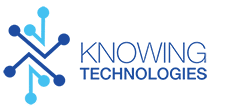Build your technology program from the ground up
A technology plan for schools (especially independent schools) can be difficult, expensive, emotionally charged, and mired in distracting non-issues that at times can seem, well, religious. They can get bogged down by well-meaning parents, hobbyists, and even technology leaders from industry that are certain that the problems the school faces are easily solved, and just require the right equipment. I once had a parent offer to send their company’s IT person over for an afternoon to explain how they did things.
The benefit that businesses have over schools, certainly independent schools, is that in business, everyone knows what problem they are solving, and how the company intends to address it. In schools, that is rarely the case. What schools have in common, however, is that if properly led, a common vision can be articulated, and a common problem can somewhat coalesce.
Why is a Technology Plan for Schools Important?
So there it is: start with an understanding of what the problem is. You might have variants of these at your school, but here are some of the repeating themes we have seen:
- Kids learn differently today. Differently than they did 10 years ago, certainly. Why teach them the same way? This doesn’t take much research to find data to corroborate, but there social worlds, and the way they interact in them, are likely vastly different than yours was.
- Competitive schools create environments that are engaging to students who are more actively involved in the learning process – not seated in rows listening to lectures or watching PowerPoint presentations. Engaged students develop a greater sense of academic agency, and continue their learning on accelerated trajectories beyond our schools. We want our classrooms to be those places.
- Technology is essential in today’s engaging classrooms and the most effective teachers are always working to find new ways to blend it with their instruction. Most experienced teachers have not been trained with these skills, and must embark on professional development to create them. It can be extremely difficult for teachers with a full load of classes and years of traditional teaching experience to commit to such changes, and to get adequate support from their leadership. Attending workshops or bringing in guest lecturers won’t realize such changes.
How to Develop Your School Technology Plan
It is with these realities that we present these steps to develop a meaningful technology plan for schools.
- Forget about the devices. This is a common starting, and ending, point for ill-conceived programs. iPads or laptops? BYOD or 1:1? These will be questions to answer, but not right away. Devices will change, and creating a program around a device makes a program that lasts only as long as the devices do. We still see schools that build “iPad programs” as their foundational plan.
- Start with the Strategic Plan. Strategic Plans don’t provide roadmaps for technology integration, but they should be very clear about what instruction is going to provide to your students. Will technology skills development be in your academic plans, or will your school expect students to figure it out on their own? We were thrilled recently to see “student-centered teaching” in one school’s strategic plan. To us, that’s nirvana. It means the school is committed to making foundational changes to address how students learn today. We almost didn’t need anything else to move on.
- Research. There is so much available research and credible material that conveys new ways we understand adolescent to take place. What happens in kids’ brains, and why do need to be taught differently? So much of this material has direct or indirect linkage to technology, and moving forward with a technology plan must bring this concepts into consideration, whether you end up agreeing with them or not.
- Philosophy. A successful instructional technology action plan must have clear with objectives. One strategy is to document objectives in an Instructional Technology Philosophy document. We guide our client schools through creating this important document by asking many reflective questions.
- Educational Technology Action Plan. Once the philosophy is done, teachers go to work investigating how they start transforming their work and develop an action plan. Part of their agreement is that every teacher is expected to adopt one form on instructional tech in, say, at least one unit – or they commit to redoing at least one course per year. There must also be some forum where they have to show their colleagues what they’ve done. (Note: that can migrate into real workshops where teachers lead other teachers through using a piece of technology).
- 3 Year Technology Budget. Each initiative in the action plan has real costs, and the expenditure of them needs to be planned. Avoid buying anything without support for that purchase in the plan. Maybe there is a reason it wasn’t planned for. If you find you are having to jam in unconsidered expenses, you may need to reconsider the effectiveness of the plan. Start with the infrastructure. If the technology isn’t reliable, teachers wont use and and the program will fail. It doesn’t have to be expensive, but it does have to be reliable. Avoid the trap of public domain (non supported) solution. The tremendous hidden expense of Linux solutions is the very real personnel you will have to hire to install it, configure it, and keep it alive, and God help you if they should leave. That solution is tied to the person who built it, there is no vendor to call. Factor in maintenance plans and replacement at the end of the life of the solution, though a 3 year budget rarely lives long enough to see solutions obsolesce. To that point, the cost of a laptop is not the cost of a laptop, they have to be imaged, supported, backed up, and supplied with apps. All real dollars there, too.
- Professional development. With the infrastructure solid, or on its way to be, you’ve got to have teachers know how to provide an optimal educational experience with it. Using iPads to navigate to a website or interact with a parametric model of molecules are not the high-imapct learning activities possible with technology. They must learn how to develop their own skills and climb to the top of the SAMR model of instruction. Get those students actively engaged in their own learning, collaborating and creating media rich representations of their knowledge. This often requires a fundamental shift in the very way that teachers were trained and have been teaching for years, so don’t underestimate the support they will need in making that shift. Professional development strategies should ensure that teachers, school library personnel and administrators know how to effectively use the technologies described in the plan. In order to improve education and support technology-rich learning environments start by describing the professional development strategies, addressing key questions, and reflecting on what’s worked and not worked in the past. How will your school sustain professional development this time? How will professional development increase the effective use of technology in your varied learning environments? What models do you have for 21st century skills? Which educators are proactively enhancing their personal learning experiences? Are they candidates for teaching other teachers? How well do they collaborate and embarrass technology? Professional development shouldn’t stop with faculty. In order to attract and retain technical staff ask what professional development opportunities and resources best meet their needs.
Summer break offers a nice time window for administrators to assess technology risks and audit current processes. I hope you found these tips useful. Let me know what you think and share how you prepare technology for the next school year.




